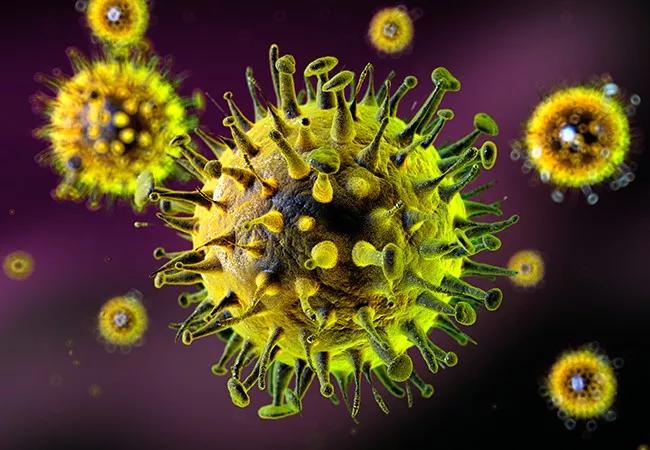Viruses create complications and opportunities in pandemic

Comparisons between influenza and SARS-CoV-2 have led to some confusion in the broad population, but there are advantages to considering the viruses in the context of one another. In a recent column for the Cleveland Clinic Journal of Medicine, Sherif Beniameen Mossad, MD, observes the “dual threat, dual opportunity” of the diseases as the COVID-19 pandemic proceeds across North America.
Advertisement
Cleveland Clinic is a non-profit academic medical center. Advertising on our site helps support our mission. We do not endorse non-Cleveland Clinic products or services. Policy
Among Dr. Mossad’s chief concerns are vaccination challenges. With the rollout of the first FDA-authorized COVID-19 vaccines just begun, studies indicate that vaccine resistance may keep many from protecting themselves against the virus when they have the opportunity to do so. Rates of vaccination against influenza similarly have been low – 35% among adults 18 to 49 during the 2018-2019 influenza season — for reasons that include lack of confidence in variable efficacy rates for flu vaccines and concerns about safety and side effects.
Given the public health implications of the COVID-19 vaccination program, Dr. Mossad suggests that vaccine skeptics might not be the best targets for compliance efforts.
“We may need to choose our battles wisely by focusing on the slim majority (57.6%) who intend to be vaccinated,” Dr. Mossad writes, “and by implementing measures well-established in annual influenza vaccination to close the intention-to-behavior gap, such as providing the vaccine free of charge at the workplace or school.”
A comparison of COVID-19 and the influenza A (H1N1) pandemic of 2009 in Table 1 underscores disease commonalities, including mode of transmission (respiratory droplets, contact with contaminated surfaces, airborne viral particles); clinical presentation (fever, headache, myalgia, malaise, dry cough, sometimes vomiting and diarrhea); and complications and preventive measures.
Noted distinctions include incubation period (2 days for H1N1; 2-14 days for COVID-19), case fatality rates (0.02%-0.05% for H1N1; 0.5%-1% for COVID-19), and the course of illness; H1N1 illness typically started with several days of acute illness; COVID-19 onset is often gradual with sudden escalation in severity.
Advertisement
The COVID-19 pandemic has had a deleterious effect on preventive healthcare and even urgent care. Emergency department visits decreased 23% for heart attacks and 20% for strokes in the United States in the early months of the pandemic, Dr. Mossad points out.
Conversely, public health measures to contain spread of COVID-19 — use of physical distancing, hand washing, face masks, isolation and contact tracing – dramatically reduced positive influenza test rates from 20% to 2.3% within two weeks in March 2020.
Moreover, efforts to prevent the spread of influenza have benefits in the battle against COVID-19, Dr. Mossad writes. Preliminary studies indicate that influenza vaccines might offer some benefit for the COVID-19 pandemic through cross-reactivity or “bystander immunity.” He cites a study in Brazil of 90,000 COVID-19 cases showing that patients who received the 2020 influenza vaccine were 18% less likely to need invasive respiratory support and 17% less likely to die. Additionally, he notes, influenza vaccination help preserve resources, including healthcare workers, for fighting COVID-19.
The full commentary can be read here.
Advertisement
Advertisement

Patients report improved sense of smell and taste

Clinicians who are accustomed to uncertainty can do well by patients

Unique skin changes can occur after infection or vaccine

Cleveland Clinic analysis suggests that obtaining care for the virus might reveal a previously undiagnosed condition

As the pandemic evolves, rheumatologists must continue to be mindful of most vulnerable patients

Early results suggest positive outcomes from COVID-19 PrEP treatment

Could the virus have caused the condition or triggered previously undiagnosed disease?

Five categories of cutaneous abnormalities are associated with COVID-19